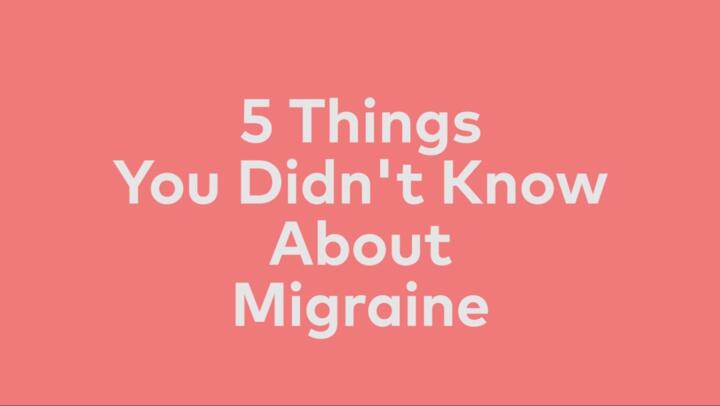-
If you experience migraines, don’t resign yourself to believing there’s nothing you can do about them. It’s especially important never to ignore certain migraine symptoms that could be dangerous. Some of these symptoms may be a result of an underlying health condition, rather than a true migraine. If you experience any of these symptoms, consider them red flags and talk to your doctor right away. Some require emergency treatment. Learn more about dangerous migraine symptoms to look out for.
-
1Migraine With Aura

Migraine with aura is also known as classic migraine. The aura is often a visual change, which may appear as flashes of light, blind spots, shimmering zig zags in your field of vision, vision loss, or other visual disturbances. Some people experience numbness or tingling as a migraine aura.
While it’s not unusual for people with migraine to sense an aura before a migraine occurs, don’t ignore this symptom. Migraine with aura has been linked to an increased risk of stroke in women, particularly those younger than 55. Similar visual disturbances can also indicate a retinal tear, so talk to your doctor right away if you experience migraine with aura.
-
2Visual Disturbances

There’s another reason to report vision changes to your doctor: Instead of being a visual aura that you’re experiencing, it could be a seizure. Migraine and seizures are frequently documented as comorbid conditions, meaning they often occur together. People who experience migraine are two times more likely to have seizures, and vice versa. It was once thought that a migraine could trigger a seizure, but it may be more likely that a seizure triggers a migraine. Either way, if you experience visual disturbances before, during or after a migraine, talk to your doctor.
-
3Sudden, Severe Headache

Also called a thunderclap headache, this severe, sudden headache is not a typical migraine. As its name suggests, a thunderclap headache is abrupt and explosive—the severity of a thunderclap headache peaks within a minute of onset, and some describe it as the worst headache they’ve ever experienced. While these headaches are uncommon, they can indicate a life-threatening condition, such as bleeding in the brain, stroke or meningitis. Never ignore a sudden, severe headache and brush it off as a migraine—call 911 or go to the emergency room.
-
-
4Weakness on One Side of the Body

Hemiplegia, which is weakness or paralysis on one side of the body, is a type of aura that a person might experience before or during a migraine headache. The weakness may occur over the entire side of the body, or it may happen in just one or two parts of the body. Hemiplegic migraine is an uncommon disorder and is usually diagnosed with at least one other type of aura. This kind of migraine symptom is also a stroke symptom, so never ignore body weakness or numbness—talk to your doctor right away.
-
5Slurred Speech

Like body weakness or numbness, this migraine symptom is also a symptom of stroke. Don’t mistake this symptom for an aura, and don’t ignore it thinking it’s only a migraine. While most cases of stroke are not related to migraine, several thousand cases a year may be linked—and these cases are among people who otherwise don’t have a high risk of stroke. If you have other symptoms of stroke, such as vision loss, tingling or numbness, or if your aura lasts longer than an hour, seek immediate medical care.
-
6Stiff Neck and Fever

What might seem like a dangerous migraine symptom may not be a migraine symptom at all. If you have a stiff neck and fever along with your headache, it might not be a migraine you’re experiencing—it could be meningitis.
Because meningitis also comes with other symptoms related to migraines, such as light sensitivity and nausea, you may be tempted to ignore a stiff neck and fever. But these symptoms can be serious. While most cases of meningitis are viral and many get better without treatment, this condition still requires immediate medical attention. Bacterial meningitis can be life threatening and needs emergency antibiotic treatment.
-
-
7New Headache in Older People

If you’re age 50 or older and have not previously experienced migraines, a new headache could indicate a different problem. Particularly if you experience an aura with the migraine, talk to your doctor about the possibility of stroke. New migraines can also be a symptom of an underlying condition, such as giant cell arteritis, which can cause blindness and other complications if left untreated. And because older people are more likely to be taking medications for chronic health problems, a new headache may be a side effect of one of your medications.
People of any age should talk to their doctor about a change in headache pattern, such as frequency or severity. Early diagnosis and intervention can help prevent migraine headache complications.



























